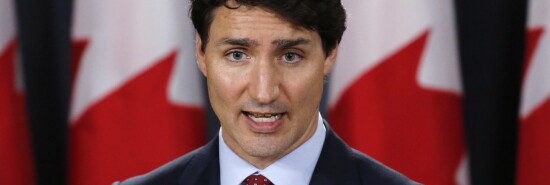
Canada’s broken tanks evince an unserious security partner
Adam Zivo
Video Embed
When it comes to sending Leopard 2 tanks to Ukraine, Canadian Prime Minister Justin Trudeau says that his government is “not there yet.” As it turns out, the reason why Canada may not be “there” is that of a decade of neglect. Canada’s tanks are mostly broken and unusable.
This is yet another example of how chronic under-investment in defense has made Canada an unreliable security partner. Despite repeated warnings, successive Canadian governments have simply freeloaded off of the United States and other NATO allies.
Canada’s meager tank fleet is a relic of the War in Afghanistan. In 2007, Ottawa deployed its old Leopard 1 tank fleet to the Middle East but quickly realized that new equipment was needed. It subsequently purchased over 80 lightly-used Leopard 2s from the Netherlands, which were essentially abandoned after Canadian combat operations in Afghanistan concluded in 2011. In a stupendous error, Ottawa had assumed that Leopard 2s would have the same maintenance needs as Leopard 1s. However, the newer tanks required six times more maintenance hours and, as such, there were only half the technicians needed to keep the fleet from decaying. Critical components were also chronically unavailable, rendering many tanks unrepairable. Despite a decade of half-hearted efforts to fix the problem, two academic papers published by the Canadian Forces College in 2018 and 2022 suggest that only 15%-20% of Canadian tanks are fit for battle.
Canada’s fighter jets are not much better. In 2010, the previous Conservative government announced plans to replace Ottawa’s aging fighter jet fleet with new F-35s. When the Trudeau Liberals were elected in 2015, they canceled the F-35 procurement on partisan grounds and instead acquired 18 second-hand F-18 fighter jets from Australia. That purchase has been widely criticized over the years as many of those outdated jets remain unusable due to radar refurbishments that will take years to complete. Earlier this month, the Liberals changed their minds and, in a painful example of waste and pointless delays, decided to procure the F-35s they had axed seven years ago.
The Canadian military is falling apart. Only 65.4% of the army’s hardware and 60.8% of the air force’s fleet are fit for service. Only the navy has bucked this trend: 98% of its ships and equipment are ready for deployment.
Money matters.
Canada currently only invests 1.5% of its GDP into defense, which falls far short of NATO’s 2% minimum GDP target. After Russia’s invasion of Ukraine, the Liberals touted a paltry 5% spending increase, which pales in comparison to new post-invasion funding commitments announced by other NATO members. Meanwhile, recruitment problems have created a crippling shortage of up to 10,000 regular force members, causing the Canadian Armed Forces to halt non-essential operations until it refills its ranks. For years, the U.S. repeatedly criticized Canada for “freeloading” and urged its northern ally to pull its weight.
Unfortunately, those warnings were ignored.
CLICK HERE TO READ MORE FROM THE WASHINGTON EXAMINER
Adam Zivo is a Canadian columnist and policy analyst who relocated to Ukraine earlier this year to report on the Russia-Ukraine war. He is writing a book on how the war is experienced by average Ukrainians.
